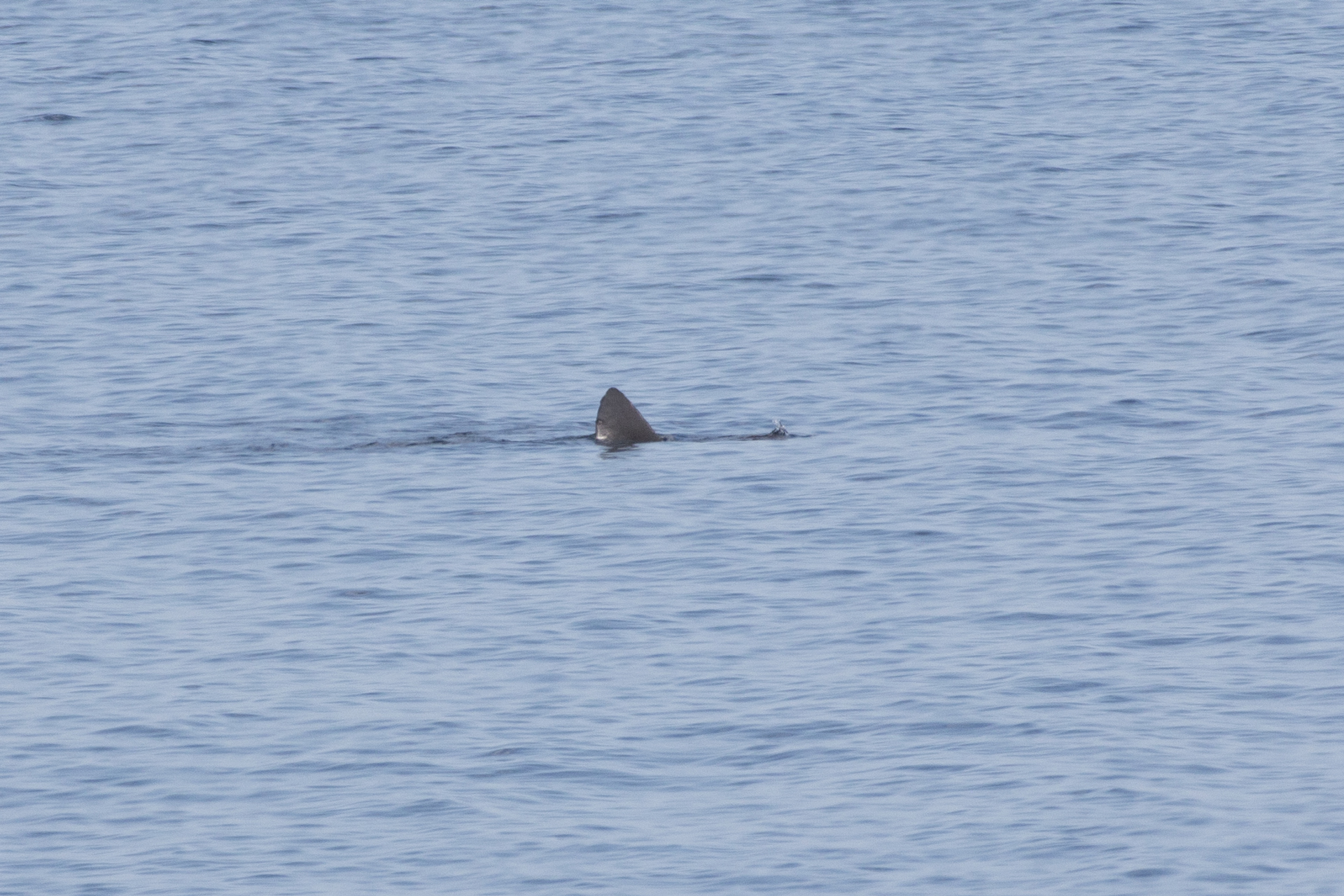Last Wednesday we were in Calabria in Southern Italy, for work reasons, so we decided to quickly explore the area of the mouth of the Corace (Catanzaro Lido). This area, which is located close to the promenade south of the town, seemed to be very interesting and, in fact, did not disappoint us.
After quickly investigating the area of the mouth (with relevant observations of which we will talk in a few lines) we stopped to observe the tuna feeding, a few meters from the coast, animating the sea. Keeping ourselves ready with the camera, with the hope of capturing any shearwaters, other sea birds or tuna in action, we positioned ourselves on the road to have a good observation point.
However, our attention was immediately captured by a “fin on the horizon”. The fin, of considerable size, entered and exited the water about twenty meters from the beach … the first sensation was to say “Shark!”. After a few photos and a video from above, we approached the big fish that continued to go up and down, making only the dorsal fin visible.

The absence of a caudal fin and the particular movement of the animal made us think that we were observing a SunFish even if the pyramidal shape of the fin continued to leave us with some doubts.
Returning home, still doubtful about the identification, we immediately contacted Emilio Sperone, professor of Unical and among the leading shark experts in Italy, who consulted the video and indicated that what we filmed was a Ocean Sunfish (Mola mola) and that, although the shape of the fin could mislead leading to think of an Basking Shark (Cetorhinus maximus), the type of movement left no doubt.
This large fish (the largest bony fish in the world) has adults that can weight over two tons. It is a pelagic species that makes long displacements. Moonfish also moves a lot also within the column of water, from the surface up to 200 meters deep, to feed on zooplankton, invertebrates and small fishes.
The basking activity, during which the fish rises to the surface by leaning sideways to expose itself to sunlight, seems to be a strategy for exposing parasites to the mercy of seabirds.
It is a species that in the Mediterranean, from boats and offshore, is sighted quite often, however less frequent are sightings from the shore. It will not be a shark but we can certainly be very happy with the observation!
Let’s go back to talking about the inhabitants of the river mouth; as previously anticipated, even here the emotions were not lacking as we managed to observe, in addition to some more common species (such as Grey Heron, Little Egret, Yellow-legged Gull, Crested Lark, etc.), also some more interesting species such as Audouin’s Gull, Little Gull and Little Ringed Plover.
The Audouin’s Gull (Ichthyaetus audouinii), of which we have observed 3 individuals, has a strictly Mediterranean distribution area, with colonies that prefer river deltas and rocky coasts. In winter, the species winters along the African Atlantic coast, reaching Senegal, while a part of the world population remains in the Mediterranean basin. The Italian population is second only to the Spanish one, which makes up about 90% of the world population.

The Little Gull (Hydrocoloeus minutus) instead, of which 5 individuals were present, in Calabria is a regular migratory, wintering and summer species. Small representative of the Laridae family, this nests by forming colonies in inland wetlands, along a discontinuous range that goes from Belarus and Finland to Mongolia and Siberia.

Finally, the Little Ringed Plover (Charadrius dubius), that in Calabria is a regular migratory and nesting species, is locally less rare but appears to be at a greater conservation risk (included in the NT category of the Italian Red List) mainly due to the anthropic disturbance at nesting sites.

We hope to return soon to explore the area … if in less than half an hour we have been able to observe many species worthy of interest, we are curious to find out what will come out of more in-depth analysis!
